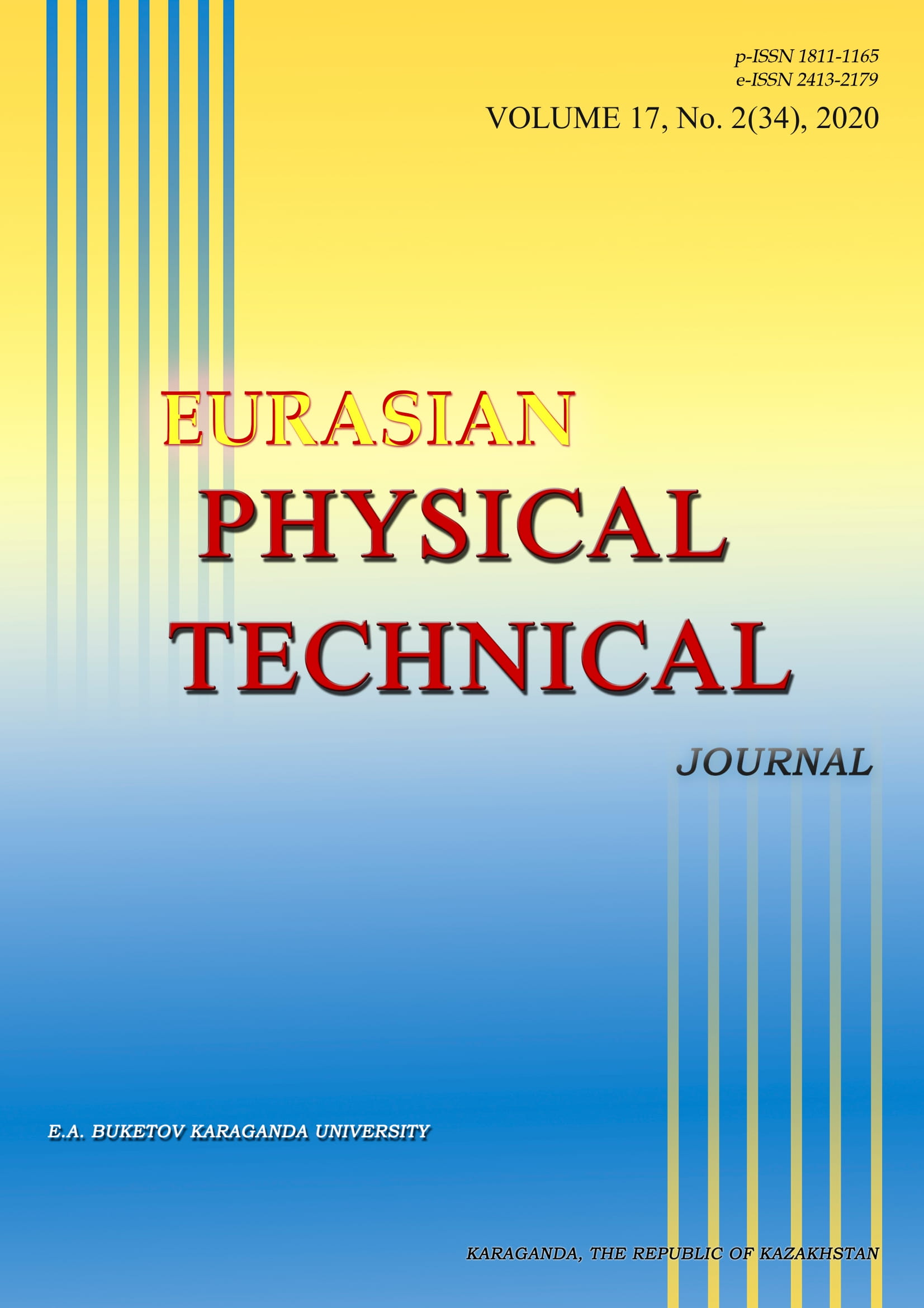PARTICLE SWARM OPTIMIZATION WITH INDIVIDUALLY BIASED PARTICLES FOR RELIABLE AND ROBUST MAXIMUM POWER POINT TRACKING UNDER PARTIAL SHADING CONDITIONS
DOI:
https://doi.org/10.31489/2020No2/128-137Keywords:
maximum power point tracking, partial shading, meta-heuristics, particle swarm optimizationAbstract
Efficient power control techniques are an integral part of photovoltaic system design. One of the means of managing power delivery is regulating the duty cycle of the DC to DC converter by various algorithms to operate only at points where power is maximum power point. Search has to be done as fast as possible to minimize power loss, especially under dynamically changing irradiance. The challenge of the task is the nonlinear behavior of the PV system under partial shading conditions. Depending on the size and structure of the photovoltaic panels, PSC creates an immense amount of possible P-V curves with numerous local maximums - requiring an intelligent algorithm for determining the optimal operating point. Existing benchmark maximum power point tracking algorithms cannot handle multiple peaks, and in this paper, we offer an adaptation of particle swarm optimization for the specific task.
References
"1 Petrone G., Spagnuolo G., Teodorescu R. Reliability issues in photovoltaic power processing systems. IEEE Transactions on Industrial Electronics, 2008, Vol. 55, no. 7, pp. 2569–2580.
Bruendlinger R., Bletterie B., Milde M. Maximum power point tracking performance under partially shaded pv array conditions. Proc. of the 21st Eur. Photovolt. Sol. Energy Conf., Berlin, Germany, 2006, pp. 2157–2160.
Abdelsalam A. K., Massoud A. M., Ahmed S. High-performance adaptive perturb and observe mppt technique for photovoltaic-based microgrids. IEEE Transactions on Power Electronics, 2011, Vol. 26, No. 4, pp. 1010-1021.
Tey K. S. and Mekhilef S. Modified incremental conductance algorithm for photovoltaic system under partial shading conditions and load variation. IEEE Transactions on Industrial Electronics, 2014, Vol. 61, No. 10, pp. 5384–5392.
Koutroulis E., Blaabjerg F. A new technique for tracking the global maximum power point of pv arrays operating under partial-shading conditions. IEEE Journal of Photovoltaics, 2012, Vol. 2, No. 2, pp. 184-190.
Seyedmahmoudian M., Mekhilef S., Rahmani R. Maximum power point tracking of partial shaded photovoltaic array using an evolutionary algorithm: A particle swarm optimization technique. Journal of Renewable and Sustainable Energy, 2014, Vol. 6, No. 2, pp. 023102. https://doi.org/10.1063/1.4868025
Mao M., Duan Q., Zhang L., Chen H. Maximum power point tracking for cascaded pv-converter modules using two-stage particle swarm optimization. Nature Scientific Reports, 2017, pp. 9381. DOI: 10.1038/s41598-017-08009-7
Verma D., Nema S., Shandilya A. M. Comprehensive analysis of maximum power point tracking techniques in solar photovoltaic systems under uniform insolation and partial shaded condition. Journal of Renewable and Sustainable Energy, 2015, vol. 7, No. 042701. 042701. DOI: 10.1063/1.4926844
Salamon P., Sibani P., Frost R. Facts, Conjectures, and Improvements for Simulated Annealing. Society for Industrial and Applied Mathematics, 2002, 127 p.
Kennedy J., Eberhart R.C. Particle swarm optimization. IEEE international conference on neural networks. IEEE, Piscataway, NJ, USA, 1995, Vol. IV, pp. 1942–1948.
Fernandez-Martinez J., Garcia-Gonzalo E. Particle swarm optimisation: time for uniformisation. Int. J. Computing Science and Mathematics, 2013,Vol. 4(1), pp. 16 – 33. DOI: 10.1504/IJCSM.2013.054671
Trelea I. C. The particle swarm optimization algorithm: convergence analysis and parameter selection. Information Processing Letters, 2003, no. 85, pp. 317–325.
Zheng Y., Ma L., Zhang L. On the convergence analysis and parameter selection in particle swarm optimization. Proceedings of the 2nd Intern. Conference on Machine Learning and Cybernetics, Wan, 2003, pp. 2 – 5.
Kurmanbay A., Baktybekov K., Sakhanov K., Syzdykov A., Mukhamediyev A. Optimization of series-parallel connection of pv array to mitigate negative influence of partial shading conditions. IOP Conf. Series: Materials Science and Engineering 2020, 868 012001. DOI: 10.1088/1757-899X/868/1/012001
King D., Boyson W., et al. Photovoltaic array performance model. Sandia National Laboratories, 2004, 43 p.
Kirkpatrick S., et al. Optimization by simulated annealing. Science, 1983, Vol. 220, No. 4598. pp. 671-680.
Fernandez-Martínez J., Garcia-Gonzalo E. The pso family: deduction, stochastic analysis and comparison. Swarm Intell 3, 2009, No. 245, pp. 273. https://doi.org/10.1007/s11721-009-0034-8
Chen S., Montgomery J. Selection strategies for initial positions and initial velocities in multi- optima particle swarms. Genetic and Evolutionary Computation Conference. Dublin, Ireland, 2011, pp. 53 – 60.
Higashitani M., Ishigame A., Yasuda K. Particle swarm optimization considering the concept of predator-prey behavior. IEEE Congress on Evolutionary Computation, 2006. DOI: 10.1109/CEC.2006.1688341
Mikki S., Kishk A. Improved particle swarm optimization technique using hard boundary conditions. Microw Opt Technol Lett, 2005, Vol. 46, No. 5, pp. 422–426.
Riget J., Vesterstrøm J.S. A diversity-guided particle swarm optimizer – the ARPSO. Tech. rep., EVA Life Project Group, 2002.
Chowdhury S., Tong W., Messac A., Zhang J. A mixed-discrete particle swarm optimization algorithm with explicit diversity-preservation. Struct Multidisc Optim, 2012, vol. 47, pp. 367–388.
. Richards M., Ventura D. Choosing a starting configuration for particle swarm optimization. Proceeding of the 2004 IEEE Intern. Joint Conference on neural networks, Budapest, Hungary, 2004, pp. 2309–2312.
Khatib W., et al. The studga: A mini revolution? in Parallel Problem Solving from Nature. 2006, pp. 683-691.
Eiben A., BackT., Schoenauer M., Schwefel H. Parallel Problem Solving from Nature - PPSN V. Proceedings of the 5th International Conference., Amsterdam, The Netherlands, September 27-30, Springer, 1998. Available at: www.springer.com/gp/book/9783540650782
Simon D. Evolutionary Optimization Algorithms Biologically-Inspired and Population-Based Ap- proaches to Computer Intelligence. John Wiley & Sons, Inc., 2013, 685 p.
Clerc M., Poli R. Stagnation analysis in particle swarm optimization or what happens when nothing happens. Tech. rep., Department of Computer Science University of Essex, 2006, 15 p.
Shi Y.H. and Eberhart R.C. Parameter Selection in Particle Swarm Optimization. Proceedings of the 7th International Conference on Evolutionary Programming VII. 1998, pp. 591 – 600.
Konak A., Coitb D., Smithc A.E. Multi-objective optimization using genetic algorithms: A tutorial. Reliability Engineering and System Safety, 2006, Vol. 91, pp. 992–1007.
Wolpert D., Macready W. No free lunch theorems for optimization. IEEE Transactions on Evolutionary Computation, 1997, Vol. 1, No. 1, pp. 67–82.
"













